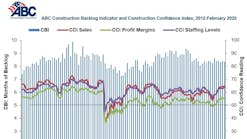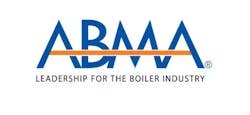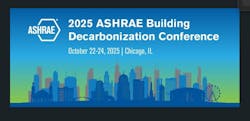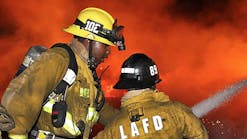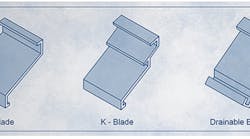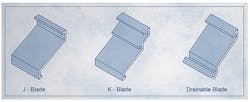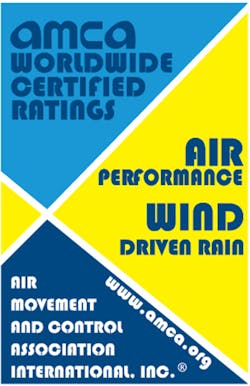Editor’s note: This article is adapted from the whitepaper “Introduction to Intake and Exhaust Louvers,” which is available to download at no cost at www.amca.org/whitepapers.
In this era of sustainability, there is a growing need to supply buildings with fresh outdoor air and, thus, a growing need to protect outdoor air and build exhaust openings with louvers. Over time, louvers have evolved to meet market demands and changing design and code requirements.
Louver Types
A louver is a device consisting of multiple blades that, when mounted in an opening in a building’s envelope, permits the flow of air, but inhibits the entrance of water, rain, sand, and other unwanted materials.
- For our 2021 podcast with AMCA thought leaders, click here.
Louvers with “Z”- or “J”-type non-drainable blades have been in use in building construction for centuries. They provide a means for large volumes of airflow but offer virtually no rain defense. This led to the design of “K”-type non-drainable-blade louvers. Dubbed “stormproof,” these louvers feature a rain hook in the blade design but provide only very little rain defense (Figure 1).
Drainable-blade louvers were created to mitigate the effects of water infiltration. The dual-drainable-blade louver was developed with hopes of improved performance over the single-drainable-blade louver. This louver, however, provides minimal rain defense and is insufficient in wind-driven-rain conditions.
In 1999, in response to demand for greater levels of building-envelope protection, AMCA added a new test to ANSI/AMCA Standard 500-L, Laboratory Methods of Testing Louvers for Rating. The original test for water penetration uses still air, and it continues to be a criterion for evaluation. Loosely based on European test standards generated by HEVAC, a U.K. trade association, the updated test standard addressed the impact of severe weather (wind-driven rain) on louver performance.
This change in market requirements led manufacturers to develop a new product: the wind-driven-rain louver. Typical wind-driven-rain louvers can be characterized by their close blade centerlines, sophisticated aerodynamic blade shapes, and front and, sometimes, rear rain gutters. These louvers effectively mitigate water infiltration and, in many cases, have significantly higher airflow capacities than traditional louvers.
Additional louver types—adjustable blade, combination louver/damper, vertical blade, “Y”-blade, acoustical, and various architectural—have been developed to meet design conditions and market demands. Another type of louver has been designed to reject wind-driven sand, meeting requirements for deserts and where commercial construction exists near beaches and other sandy areas.1
| Check out this additional resource that compares two high-velocity, wind-driven rain testing standards and discuss louver test requirements in the International Building and Mechanical Codes: Hurricane-Compliant? Comparing Louver Test Standards, Requirements |
Performance Criteria
The three most common performance criteria in the selection of louvers are:
- Pressure drop. Pressure drop, also known as air performance, is the difference in pressure between two points in a flow system.
- Free area. Usually expressed as a percentage, the free area is the minimum area through which air can pass. It is not to be confused with the face area, which is the total cross-sectional area of a louver.
- Water-penetration resistance. Water-penetration resistance is the amount of water that passes through a louver at specific airflow conditions. It is expressed as the weight of water passing through a louver divided by the free area at a specified free-area velocity. The maximum rating for water-penetration velocity is 1,250 fpm.
What to Consider When Selecting a Louver
Selection of the appropriate louver for an application requires an understanding of the parameters for louver-selection criteria, the design intent of the application, and the local building codes. Most traditional louvers are evaluated based on the aforementioned pressure drop, free area, and water-penetration resistance.
Rain infiltration, in particular, can cause a variety of problems, ranging from ruined ceiling tiles and drywall to mold growth to equipment damage to personal injury from wet floors, inside of a building. It is important to note the ANSI/AMCA Standard 500-L water-penetration test is a still-air test, replicating calm-rain conditions without the effect of wind. In this test, water is applied to a louver in two ways: simulated raindrops falling from above and simulated rain running down the face of a wall (via water sprayed at the test-chamber bulkhead above the louver). Airflow is pulled through a louver from behind, and no wind effect is applied. The purpose of the test is to determine the free-area velocity through a louver with 3 mL (0.01 oz.) (mass) of water penetration per square foot of free area. The maximum airflow tested and maximum AMCA rating for water penetration is 1,250-fpm free-area velocity.
While traditional louvers can prevent some rain penetration in calm-rain conditions, they are much less effective in wind-driven-rain conditions.
When selecting a louver, a specifier should remember that percentage free area is not an indicator of overall louver performance; it simply is an indicator a particular model may be suited to handle larger volumes of air. Blade design has a direct impact on pressure drop. Generally speaking, the more steps, rain hooks, and drainage provisions in a blade configuration, the more negative the effect on air performance. Blade spacing and geometry, the direction of airflow, drain pans, and rear structural supports also can affect water-penetration performance.
Louvers for Extreme Conditions
ANSI/AMCA Standard 500-L’s wind-driven-rain test simulates storm conditions. The test compares how much water a louver rejects to how much water penetrates an identically sized opening minus a louver.
In this test, the air is pulled through a louver and blown at the louver’s face simultaneously. Then, water is added to the air stream and blown at the louver. Two levels of storm conditions are simulated: 29-mph wind with 3-in.-per-hour rainfall and 50-mph wind with 8-in.-per-hour rainfall. Airflow is pulled through the louver at various rates, and water penetration is measured in grams or ounces (volume) over an hour. The result is an effectiveness ratio and coefficient of performance. The highest performance rating possible is Class A, which represents 99 percent or greater rain rejection.
The Effectiveness of Wind-Driven-Rain Louvers
In a comparison test,2 a traditional drainable-blade louver that achieved the highest-possible rating via the ANSI/AMCA Standard 500-L water-penetration test (a beginning point of water penetration at 1,250-fpm free-area velocity) was tested to the basic condition of 29-mph wind and 3-in.-per-hour rainfall per the wind-driven-rain test. At the highest system airflow available, many wind-driven-rain louvers can provide 99 percent or better rain rejection. In contrast, the traditional louver rejected approximately 65 percent of the water applied, allowing more than 25 times as much water.
AMCA Louver Certifications
Before specifying a louver, a designer should understand how it performs. While there are many test methods and certifications designed to aid decisions, louver manufacturers may arrive at their self-reported performance data using different test methods and laboratory setups. To ensure cataloged performance data is accurate and current, the use of a third-party certification body is recommended.
AMCA is just such a certification body. Also, it creates peer-vetted American national standards for testing louvers. The most common AMCA standard used to test and rate the performance of louvers is ANSI/AMCA Standard 500-L. AMCA also administers and maintains the AMCA Certified Ratings Program (CRP) for air-control products. Guidelines for certifying performance ratings can be found in AMCA Publication 511, Certified Ratings Program - Product Rating Manual for Air Control Devices.
When a product is licensed through the CRP, a specifier can be sure its performance test data were collected in accordance with methods prescribed in a nationally accredited standard, that AMCA staff members have hand-checked the product-line catalog, ensuring the ratings and information are correct, and that the product line has been subjected to a check test at specified intervals to ensure the continued integrity of the information.
AMCA seals may not be on products, but they should be in manufacturers’ catalogs, on datasheets, and in electronic software.
Louvers can be certified for:
- Air performance.
- Sound performance.
- Water penetration.
- Wind-driven rain.
- Wind-driven sand.
- Air leakage.
Manufacturers can opt to have one seal per license type or combined seals (Figure 2).
How to Specify AMCA-Certified Louvers
Architects and engineers must specify louvers properly if they are to get the performance characteristics required for a given application. Aside from general construction details, specifying percent free area, maximum allowable pressure drop, beginning point of water penetration, and, if applicable, wind-driven-rain-penetration class (typically, Class A) at a specified free-area ventilation rate is recommended.
To ensure louvers are AMCA-certified and meet specified criteria, the following language should accompany specifications:
More information about the CRP and specification can be found in AMCA’s CRP-related whitepapers at www.amca.org/whitepapers.
Conclusion
There always will be challenges for building owners and designers to overcome. With the growing need for fresh outdoor air and an emphasis on total systems efficiency, louver-construction technology, and testing standards have been steadily improving, helping to meet the evolving demands of the building-construction market. Understanding the design requirements of a project’s location and the kinds of louvers available will help you choose the louver best-suited to defend against the elements, allowing for proper ventilation and optimal system efficiency. And specifying AMCA-certified louvers will help ensure your design performs as intended.
References
- AMCA Sand Louver Committee. (2016). Introducing the AMCA sand louver test standard. Arlington Heights, IL: AMCA International. Available at http://www.amca.org/whitepapers
- Livingston, J. (2007, Spring). The value of wind-driven rain-resistant louvers. AMCA InMotion, pp. 18-20. Available at http://www.amca.org/inmotion
